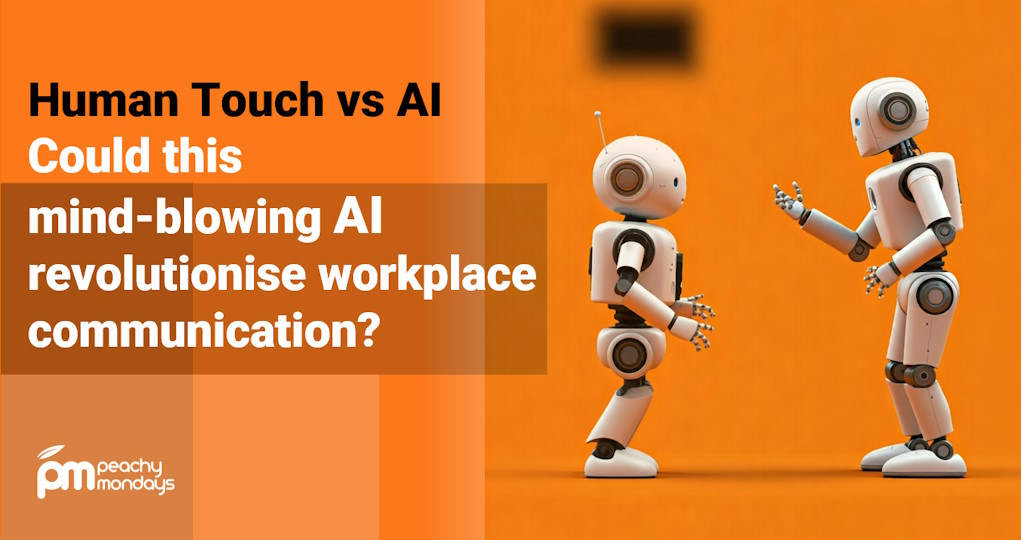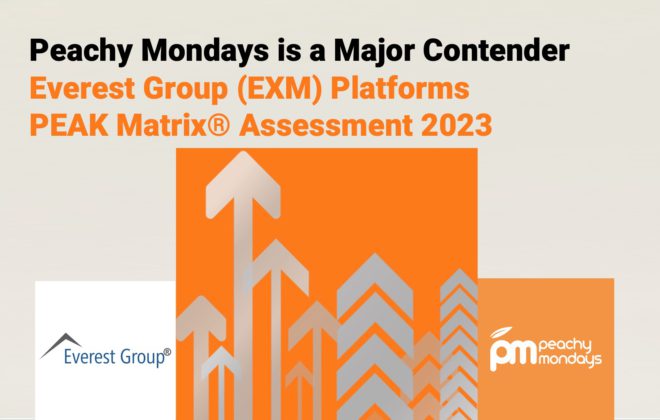Human Touch vs. AI: Could this mind-blowing AI revolutionise workplace communication?
Futurist and author Arthur C. Clarke, whose imagination and insight influenced so much in modern science and who predicted Artificial Intelligence 60 years ago, said “Any sufficiently advanced technology is indistinguishable from magic”. It seems that’s never been more true. Listen to the podcasts in this article for unbelievable examples of the evolving capabilities of AI – which prompted employee engagement, culture, and organisational development expert Kerry Freeman to consider… “Could this revolutionise workplace communication?”
In today’s workforce, cutting through the noise of constant communication is more challenging than ever. Employees are bombarded with emails, updates, newsletters, and Slack messages, all competing for their attention. Amid this overload, it’s incredibly difficult to create messages that truly resonate and build a genuine connection. Breaking through this “communication clutter” requires not just delivering content, but doing so in a way that feels human, relevant, and meaningful to each individual – but does that mean it needs to be delivered by a human?
If not, Google NotebookLM could become one of the break-through solutions for creating podcasts for busy leaders and communications / engagement professionals.
When we learnt about this new Google experiment, we jumped on it and put a couple of our blogs through the podcast creator.
We were absolutely blown away by the quality, the accuracy, and the listenability of the content, as two realistic AIs discuss the articles and bring them to life.
Have a listen here:
Preparing for your Employee Survey: 5 suggestions for maximising your success
Why are your joiners leaving? Five strategies to turn it around
Literally, we pasted in the link, and in about 5 minutes out popped something instantly publishable. We all got a bit excited about the potential applications – for us, and for our clients. Could this be a way in which complex information can be broken down into manageable, conversational chunks?
Why might this easy, simple, podcast solution be part of the answer? Podcasts have seen a surge in popularity in recent years, becoming a favourite way for people to consume content on the go and offer a flexible, accessible format that fits seamlessly into busy lives. Their conversational style and storytelling approach create a more engaging, personal experience than traditional written content. In the workplace, the use of podcasts is on the rise for internal communications as a medium to share updates, leadership messages, and company culture stories in a way that feels less formal and more relatable.
Podcasts also have some great accessibility features. They offer flexibility in how and when they are consumed, employees can listen at their own pace and provide an alternative format that suits different learning styles. This versatility ensures that podcasts can reach a wider audience and cater to diverse needs within the workplace.
And so – being able to create an engaging podcast in a few minutes must be a good thing, right?
We are intrigued to see the results of this latest experiment in AI with Google NotebookLM. The big question is – do we still process a ‘fake’ conversation as well as a real conversation? Do we even know the differences? Rationally we would predict that the trust equation is broken if we know that the speaker isn’t an expert, hasn’t really done the work, or experienced the content in real life and therefore we might learn less from the content. When it comes to internal communications, we instinctively believe people want to hear from their leaders and experts – they want to be able to ‘see’ the character of the person leading them if they’re to put their faith in them. If our bodies and brains respond to a VR rollercoaster in exactly the same as a real one – even though we know we have our feet firmly on the ground – maybe we’re overestimating our ability to tell the difference?
For the time being, it’s a great novelty (and we humans love novelty) but we expect one that will wear off relatively quickly, as we’ll soon get bored of the same voices, but given that deep fake tech is already there and able to accurately mimic voice and facial features, where might this lead us in the workplace? Might it allow leaders to automate communications using highly realistic, AI-generated voices and videos. The implications of that could be profound. On one hand, it might seem efficient leaders could “appear” to deliver important messages without actually being present, allowing them to communicate more frequently and consistently.
However, we predict it’s more likely to lead to the ‘uncanny valley effect’. Instead of fostering connection and trust, these hyper-realistic but artificial communications can create discomfort, suspicion, or even a sense of manipulation. Employees may feel distanced from leadership, as the authenticity and emotional nuance that build trust are missing. This disconnect can undermine engagement, reduce loyalty, and erode the sense of psychological safety necessary for effective teamwork.
To counter the over-use of AI, organisations need to focus on preserving the human touch in leadership communication. Leaders should still prioritise live, in-person or real-time virtual interactions when it comes to important conversations, especially those involving feedback, recognition, or cultural shifts. Additionally, transparency will be key — employees should be made aware when AI or deepfake technology is being used, and it should be positioned as a tool that complements, not replaces, genuine human engagement. Building trust and fostering authentic relationships will be more important than ever to ensure that technology enhances, rather than undermines, workplace communication.
We get excited about every new opportunity to apply AI and because we’re small and agile, we’re able to move into experiments really quickly, but we’re also keen to preserve and celebrate our humanness when it comes to employee engagement. Google NotebookLM and other AI tools are opening exciting new doors for workplace communication, making it easier and faster to connect with employees, but we can’t lose sight of what truly matters — authentic human connection. While AI can enhance communication, trust and real engagement come from genuine interactions.
Leaders need to prioritise personal, meaningful conversations, using AI as a complement, not a replacement. By striking the right balance, we can leverage AI’s power while keeping the heart of human relationships at the centre of our workplace culture.
Related Posts
Categories
- Case Study (13)
- Change and transformation (21)
- Connectedness (4)
- Culture (17)
- Design (10)
- Diversity and Inclusion (1)
- Effectiveness (16)
- Employee engagement (60)
- Employee experience (43)
- Employee Feedback (51)
- Employee Wellbeing (1)
- Events (10)
- Financial Wellbeing (1)
- Happiness (4)
- Internal Communications (10)
- News (24)
- Onboarding (1)
- Organisational Effectiveness (18)
- Uncategorized (3)




